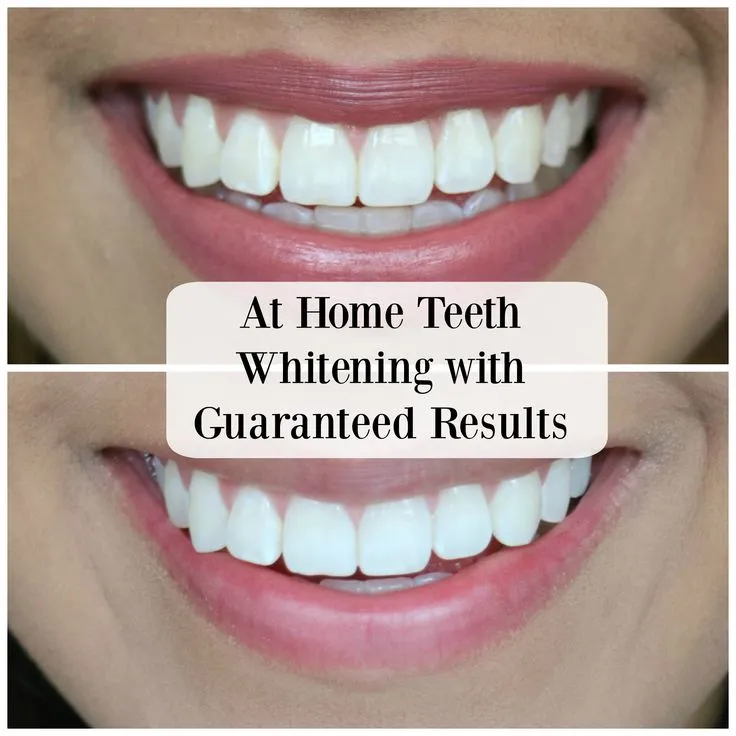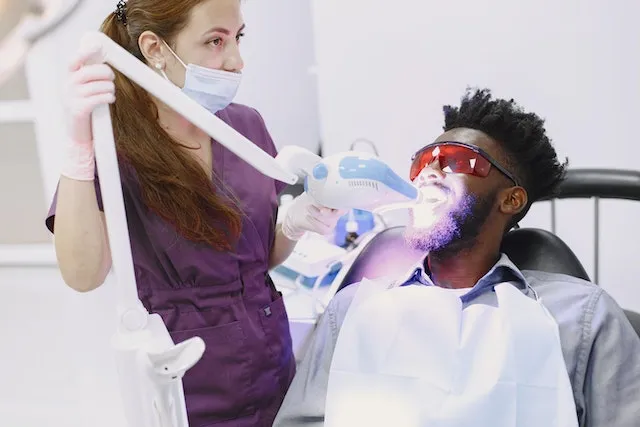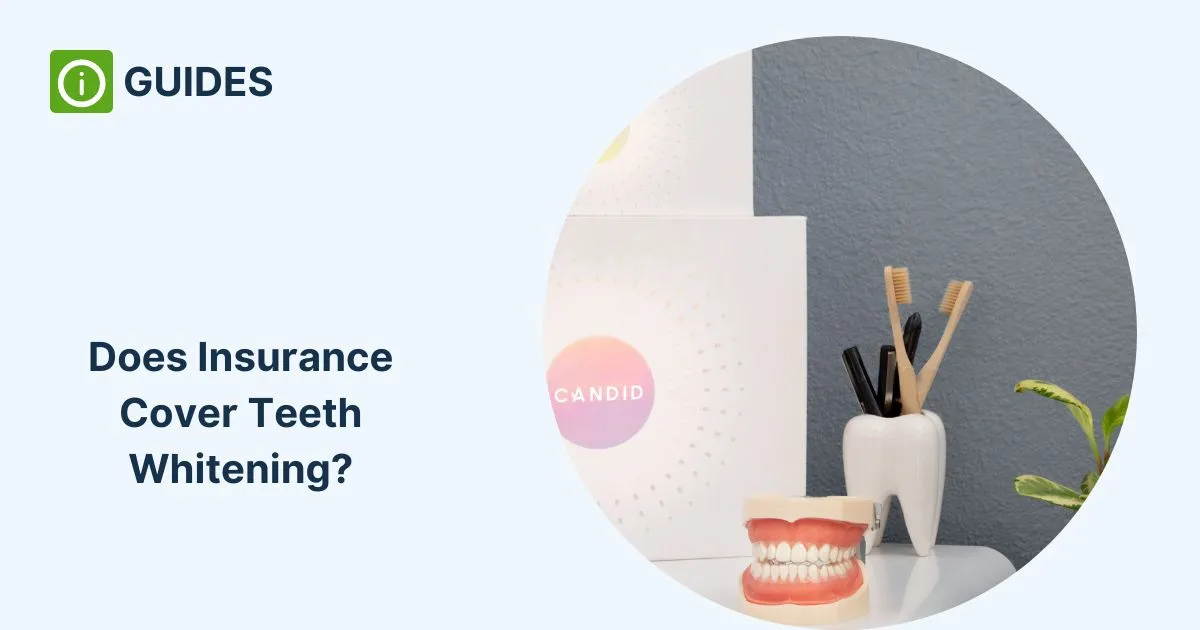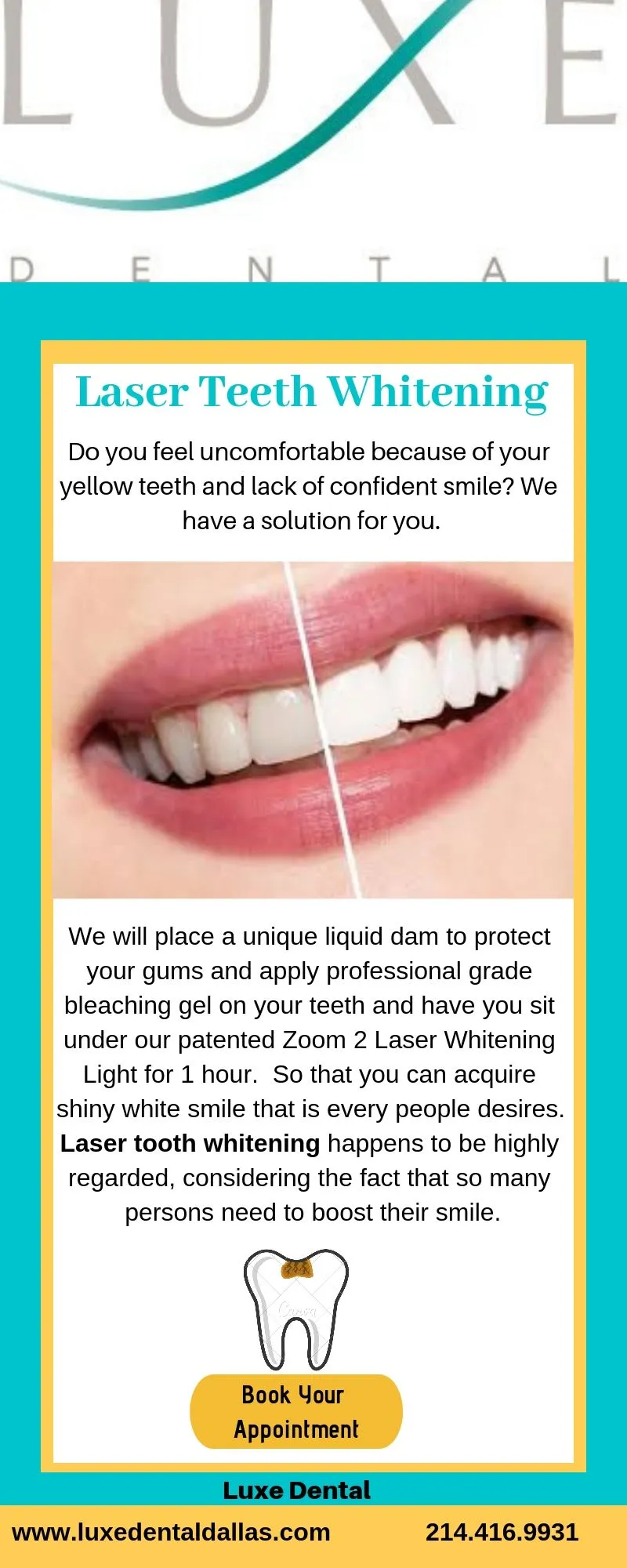Achieving a brighter, whiter smile is a common goal for many. Teeth whitening has become a popular cosmetic procedure, and with its increasing popularity, many people are curious about whether their insurance plans cover it. This comprehensive guide explores the ins and outs of teeth whitening coverage, helping you understand the different types of procedures, insurance options, and how to maximize your benefits. Whether you are considering in-office treatments or at-home kits, this guide will provide you with the knowledge you need to navigate the complexities of dental insurance and teeth whitening.
What is Teeth Whitening
Teeth whitening, also known as teeth bleaching, is a cosmetic dental procedure designed to lighten the color of your teeth. The process removes stains and discoloration, resulting in a brighter, more aesthetically pleasing smile. This procedure typically involves the use of bleaching agents, such as hydrogen peroxide or carbamide peroxide, to break down stain molecules. Teeth whitening can significantly improve the appearance of your teeth and boost your confidence. It is a non-invasive and relatively quick procedure that can be performed by a dental professional or done at home using over-the-counter products. The effectiveness of teeth whitening depends on the type of stains, the procedure used, and the individual’s oral hygiene habits.
Types of Teeth Whitening Procedures
There are two main categories of teeth whitening procedures in-office whitening and at-home whitening kits. Each method offers different approaches and effectiveness levels. Understanding the differences between these options is crucial to determining which suits your needs and budget. Factors such as the severity of the stains, your dental health, and your personal preferences play a significant role in the decision-making process. Moreover, each method has its own advantages and disadvantages in terms of cost, convenience, and the results achieved. The choice between in-office and at-home whitening often depends on your lifestyle and your dentist’s recommendations.
In-Office Whitening H2

In-office teeth whitening is performed by a dentist in a clinical setting. This professional procedure typically involves applying a high-concentration bleaching agent to the teeth, often followed by the use of a special light or laser to accelerate the whitening process. The treatment can usually be completed in one or two sessions, with each session lasting about an hour. In-office whitening provides immediate and dramatic results, often lightening teeth several shades. The dentist monitors the entire process, ensuring the safety and effectiveness of the treatment. This method is ideal for individuals seeking rapid results and those with significant teeth discoloration. However, in-office whitening is typically more expensive than at-home methods.
At-Home Whitening Kits H2
At-home teeth whitening kits are a more convenient and cost-effective alternative to in-office treatments. These kits usually include custom-fitted trays filled with a lower-concentration bleaching agent. The trays are worn for a specific period, typically a few hours a day or overnight, for several weeks. At-home kits are available from your dentist or over-the-counter. While the results may not be as immediate or dramatic as in-office whitening, at-home kits can still significantly improve the brightness of your teeth over time. It’s essential to follow the instructions carefully to achieve optimal results and minimize potential side effects, such as tooth sensitivity. Consulting with your dentist before using an at-home kit can help ensure it is safe and effective for your specific needs.
Does Insurance Typically Cover Teeth Whitening?
Generally, dental insurance plans consider teeth whitening a cosmetic procedure. As a result, most insurance policies do not cover the costs of teeth whitening. Insurance companies typically view cosmetic procedures as elective and not medically necessary, meaning they are not essential for your health. There are exceptions, however. In certain cases, if the teeth discoloration is caused by a medical condition or is deemed to be affecting your oral health, your insurance might provide some coverage. However, these situations are rare, and you’ll need detailed documentation from your dentist to justify the medical necessity. Always check the details of your policy and consult with your insurance provider to get a clear understanding of your coverage. In most cases, you can expect to pay for teeth whitening out-of-pocket.
Factors Influencing Coverage

Several factors influence whether your insurance plan will cover teeth whitening. The primary factor is the nature of the procedure itself. As mentioned earlier, cosmetic procedures are generally not covered. However, if the teeth discoloration is the result of a medical condition, such as a side effect of medication or a trauma to the teeth, there is a higher possibility that your insurance might provide coverage. The specific details of your dental insurance plan, including the type of plan and the coverage options, also greatly impact your coverage. Some plans may offer partial coverage, while others may not cover any of the costs. Additionally, the insurance company’s policies, which determine what procedures are considered medically necessary, are very important. You should review your policy documents carefully and consult with your insurance provider to clarify any doubts.
Insurance Plan Types and Coverage
Understanding the different types of dental insurance plans can help you determine your chances of receiving teeth whitening coverage. Dental insurance plans vary in the scope of coverage, the premiums, and the out-of-pocket costs. The two most common types of dental plans are Dental PPO plans and Dental HMO plans. Each plan type has its own set of rules and guidelines regarding the procedures covered. It’s important to understand your plan’s limitations and benefits. Furthermore, additional insurance options, such as discount dental plans and supplemental insurance policies, may also be available to help reduce the overall cost of teeth whitening.
Dental PPO Plans H3
Dental PPO (Preferred Provider Organization) plans typically offer more flexibility in choosing your dentist, allowing you to see any dentist, though you may receive better benefits if you visit a dentist within the network. PPO plans usually cover a broader range of dental procedures, including preventive, basic, and major services. While teeth whitening is often classified as a cosmetic procedure and is not covered, some PPO plans might offer partial coverage. The extent of coverage often depends on your specific plan and the details of your policy. PPO plans generally have higher premiums than HMO plans, but they provide greater freedom in choosing your dentist and seeking different treatments. Review your PPO plan documents carefully to determine if any cosmetic procedures, including teeth whitening, are included in your coverage.
Dental HMO Plans H3

Dental HMO (Health Maintenance Organization) plans often have lower premiums than PPO plans but typically require you to choose a dentist from within the network. These plans tend to focus on preventive care and may offer limited coverage for cosmetic procedures like teeth whitening. HMO plans often require a referral from your primary care dentist before seeing a specialist. This can affect the types of procedures that are covered and your ability to access certain treatments. While teeth whitening is often not covered under HMO plans, it’s essential to check your specific policy to see the extent of your coverage. Due to the emphasis on cost control, HMO plans are often stricter about covering cosmetic procedures. You may have to pay for teeth whitening out-of-pocket, or choose an alternative treatment.
Other Insurance Options H3
Besides PPO and HMO plans, other insurance options can provide some coverage for dental procedures. Discount dental plans are not traditional insurance, but they offer discounts on various dental services through a network of participating dentists. These plans can help reduce the cost of teeth whitening but typically do not cover the full cost. Supplemental dental insurance plans provide additional coverage for specific procedures, including cosmetic treatments. However, these plans often come with higher premiums and may have waiting periods before coverage kicks in. It is advisable to evaluate each option based on your needs, budget, and the specific benefits provided. Comparing the different plans will help you find the most cost-effective option for your teeth whitening needs.
Tips for Maximizing Coverage
Even if your insurance does not cover teeth whitening, there are steps you can take to minimize the cost. Several strategies can help to maximize any available coverage and reduce your out-of-pocket expenses. From understanding your policy details to communicating with your dentist and comparing different insurance plans, these tips can assist you in making informed decisions about your teeth whitening procedure. Taking proactive steps and making smart choices can help ensure that you receive the treatment you desire at the most affordable price.
Understand Your Policy Details

The first step to maximizing your teeth whitening coverage is to thoroughly understand your insurance policy. Carefully review the details of your plan, including the coverage for cosmetic procedures, the exclusions, and the annual limits. Make sure you understand any specific requirements, such as pre-authorization or referrals, to ensure your claim is processed smoothly. Knowing your policy details will help you anticipate the out-of-pocket expenses and determine the best course of action. Pay close attention to the fine print, and if anything is unclear, contact your insurance provider for clarification. Understanding your insurance coverage is the first and most critical step in making informed decisions.
Talk to Your Dentist
Consulting with your dentist is crucial before undergoing teeth whitening. Your dentist can evaluate your oral health, determine the best whitening method, and inform you about the potential costs. They can also provide documentation if your teeth discoloration is due to a medical condition or a side effect of medication. Your dentist may also have insights into your insurance plan and the extent of your coverage. If you have any dental issues, such as cavities or gum disease, they should be addressed before whitening. Your dentist can also recommend at-home whitening kits or in-office procedures. Their advice will help you make informed decisions about your oral health and teeth whitening needs.
Compare Insurance Plans
If you are shopping for dental insurance, comparing different plans is very important. Analyze the coverage, the premiums, and the out-of-pocket costs of each plan. Some plans may offer better coverage for cosmetic procedures. While choosing a plan, also evaluate the network of dentists, any waiting periods for specific treatments, and the overall customer service provided by the insurance company. Take the time to weigh the pros and cons of each plan carefully, and select the one that offers the best value for your specific dental needs. Remember to factor in the potential cost of teeth whitening and other cosmetic treatments. This will help you find a plan that meets your oral health and financial requirements.
Alternatives to Insurance Coverage

If your insurance does not cover teeth whitening, there are still various alternatives to consider. You may explore financing options, such as payment plans offered by your dentist or third-party financing companies, which can help spread the cost over time. You can also explore over-the-counter whitening products, which are more affordable than professional treatments. Another option is to wait for promotional offers or discounts from your dentist. It’s also possible to reduce the cost by choosing at-home whitening kits over in-office procedures. Consider your budget, the desired results, and any associated risks to find the most suitable and cost-effective alternative.
In conclusion, teeth whitening is generally not covered by dental insurance, as it is considered a cosmetic procedure. However, understanding your policy, talking to your dentist, and exploring alternatives can help you navigate the process. By taking the steps and knowing your options, you can achieve a brighter smile without breaking the bank.
